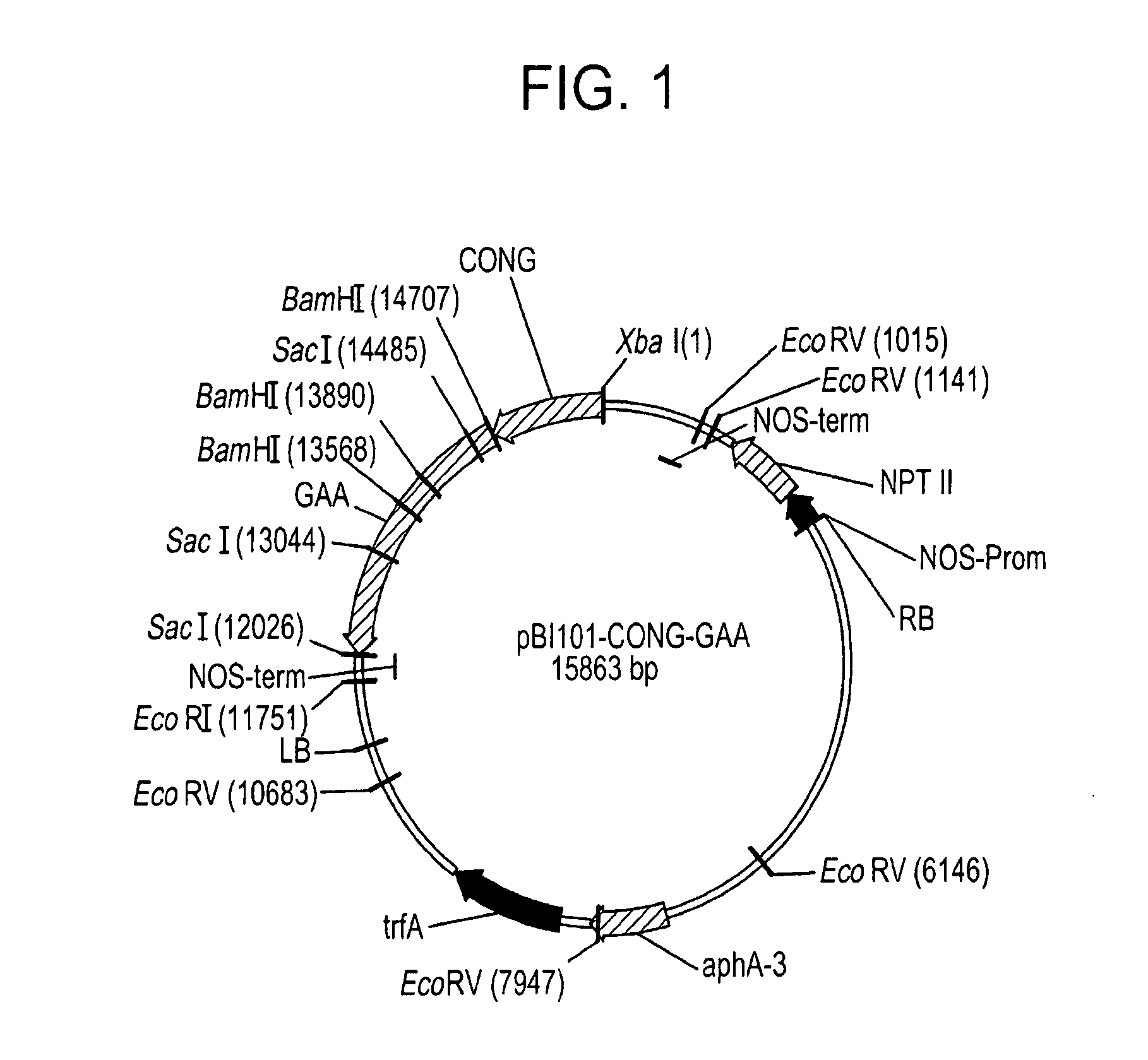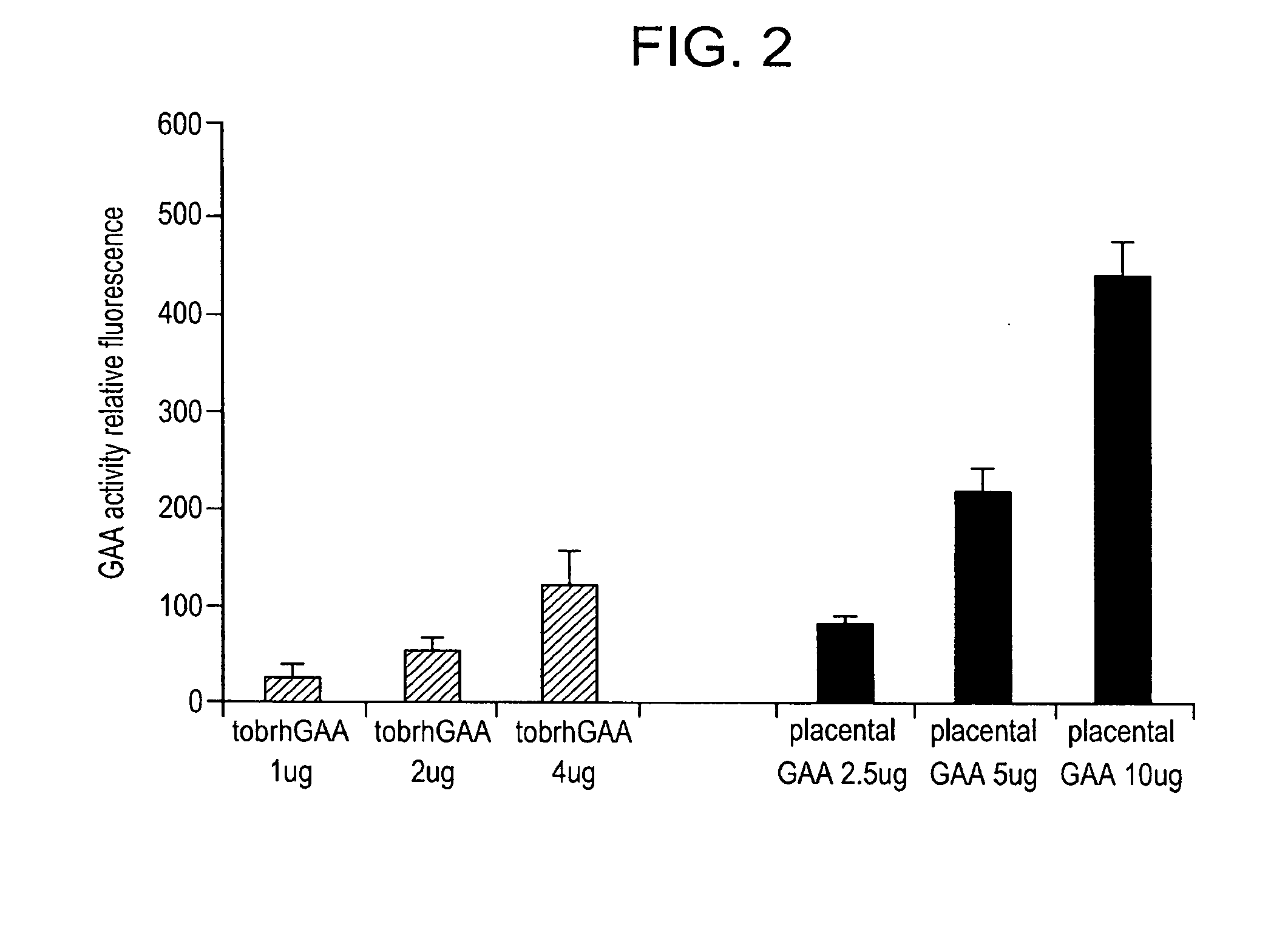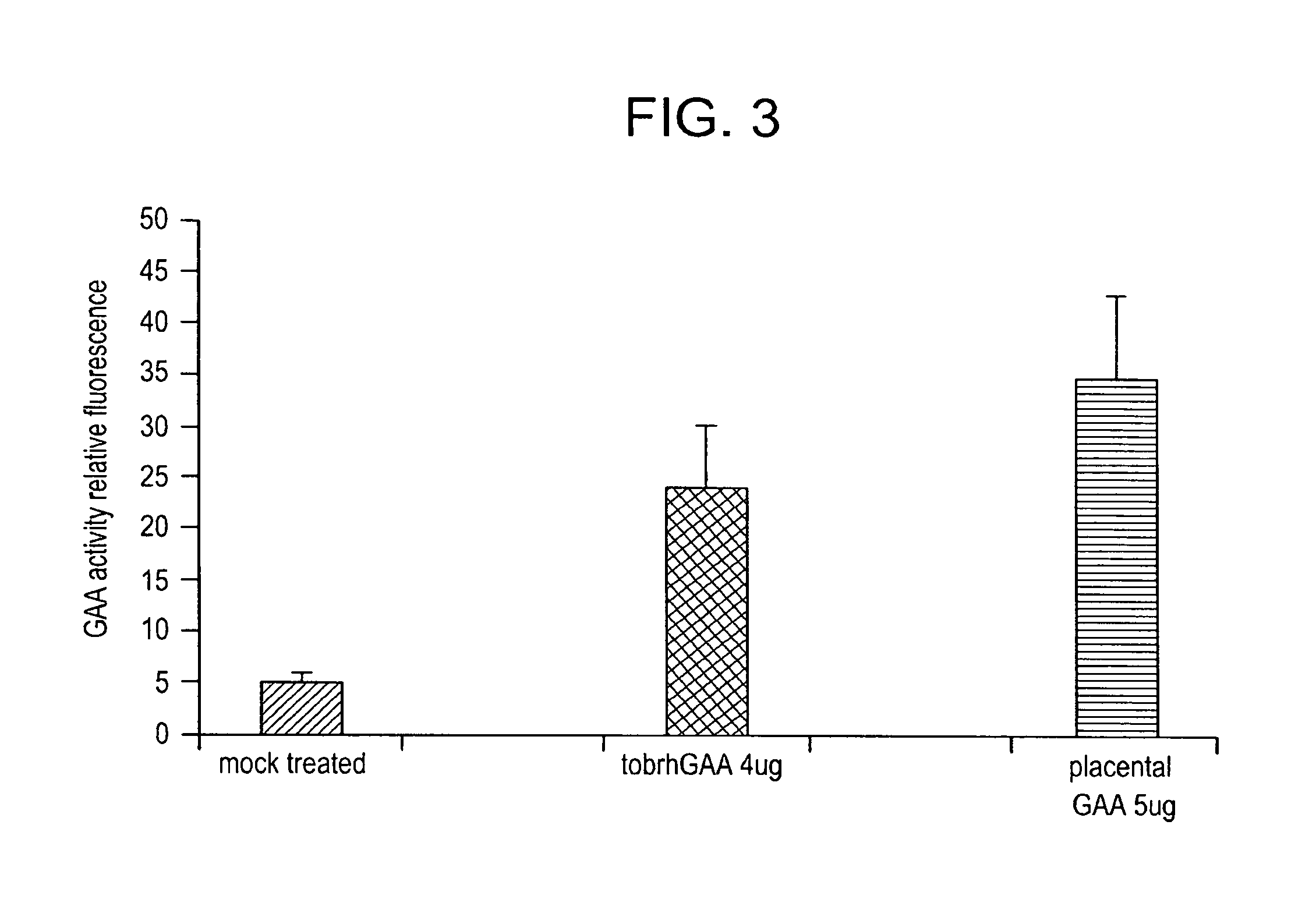Methods and oral formulations for enzyme replacement therapy of human lysosomal and metabolic diseases
a technology of lysosomal and metabolic diseases, which is applied in the direction of metabolism disorders, drug compositions, peptide/protein ingredients, etc., can solve the problems of poor tolerability, insufficient targeting/uptake of enzymes into disease-relevant tissues, and ineffective treatment or cure of gsdii, so as to improve the quality of life as well as life span, safety and convenience, and reduce the effect of cos
- Summary
- Abstract
- Description
- Claims
- Application Information
AI Technical Summary
Benefits of technology
Problems solved by technology
Method used
Image
Examples
example 1
Materials and Methods
[0070]RNA Extraction, cDNA Amplification and Cloning.
[0071]Total RNA was extracted from 200 mg of human placenta with TRIzol Reagent (Life Technologies) and poly(A)+ fraction isolated with the polyATract mRNA Isolation System (Promega) and reverse transcribed with M-MLV enzyme (Stratagene) using specific primers for the human GAA coding sequence (GAT ATC CTA ACA CCA GCT GAC GAG AAA CTG). Amplification of the GAA coding sequence was performed by combining the reverse primer with a second forward primer (GAT ATC TGC ACA CCC CGG CCG TCC CAG) matching the 5′ terminus of the cDNA sequence (GenBank Acc. No. Y00839). An EcoRV site was inserted respectively in the forward and in the reverse primer to facilitate subsequent cDNA cloning in the plant expression vector. The cDNA for mature GAA was cloned under the control of the soybean β-conglycinin promoter (GenBank Acc. No. M13759). The seed-specific promoter together with the relative 5′ UTR and transit peptide sequence...
example 2
Activator Protein (hAGA)
[0103]It is desirable to identify, clone and functionally analyze a human activator protein (hAGA) and develop a transgenic tobacco plant expressing hAGA (tobrhAGA). The gene / protein sequence of the human activator protein (AGA) may be determined by standard molecular / protein methodology and clone the gene. A recombinant hAGA may be generated in an appropriate expression system and proof of feasibility / efficacy tested by activating normal human GAA. It is possible to evaluate activation of patient mutant GAA and uptake by normal and patient cell lines (fibroblast, lymphoid and skeletal muscle) and activation of internal GAA. Various concentrations and times of exposure may be tested.
[0104]A transgenic tobacco plant expressing a recombinant human activator protein (tobrhAGA) may be generated by tri-parental mating with the plant binary vector above and determine expression in various organelles (leaves, stems, seeds, etc). A functional tobrhAGA may be localize...
example 3
Nicotine Levels in Leaves and Seeds
[0107]The level of nicotine in tobacco leaves and seeds was measured by thermo desorption / gas chromatography-mass spectroscopy (GC / MS) (Avogado n Analytical, LLC, Salem, N.H. 03079-2862). The nicotine level was determined to be <5 ng / dry gram of tobacco tobrhGAA seeds and leaves.
PUM
| Property | Measurement | Unit |
|---|---|---|
| pH | aaaaa | aaaaa |
| pH | aaaaa | aaaaa |
| pH | aaaaa | aaaaa |
Abstract
Description
Claims
Application Information
 Login to View More
Login to View More - R&D
- Intellectual Property
- Life Sciences
- Materials
- Tech Scout
- Unparalleled Data Quality
- Higher Quality Content
- 60% Fewer Hallucinations
Browse by: Latest US Patents, China's latest patents, Technical Efficacy Thesaurus, Application Domain, Technology Topic, Popular Technical Reports.
© 2025 PatSnap. All rights reserved.Legal|Privacy policy|Modern Slavery Act Transparency Statement|Sitemap|About US| Contact US: help@patsnap.com



